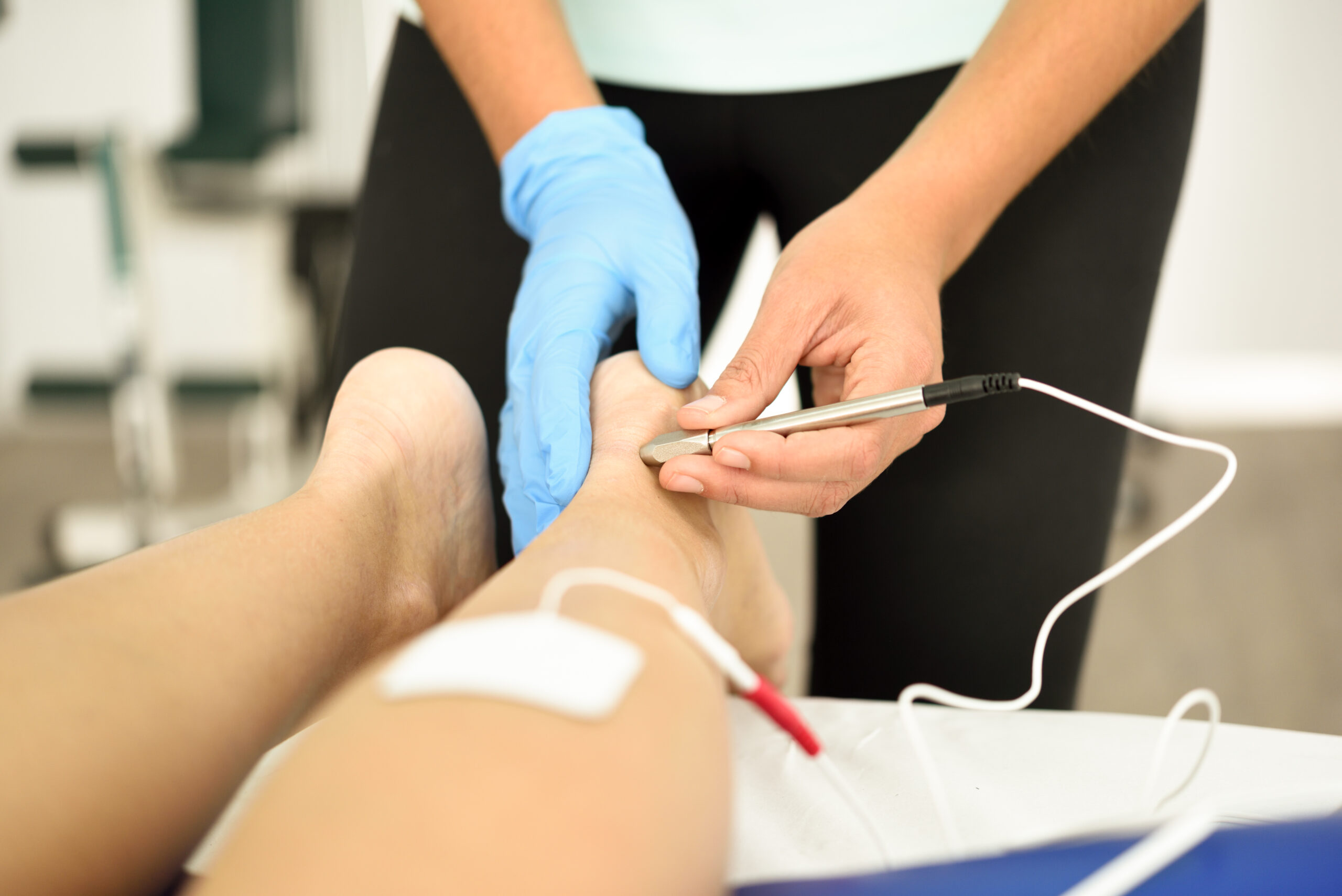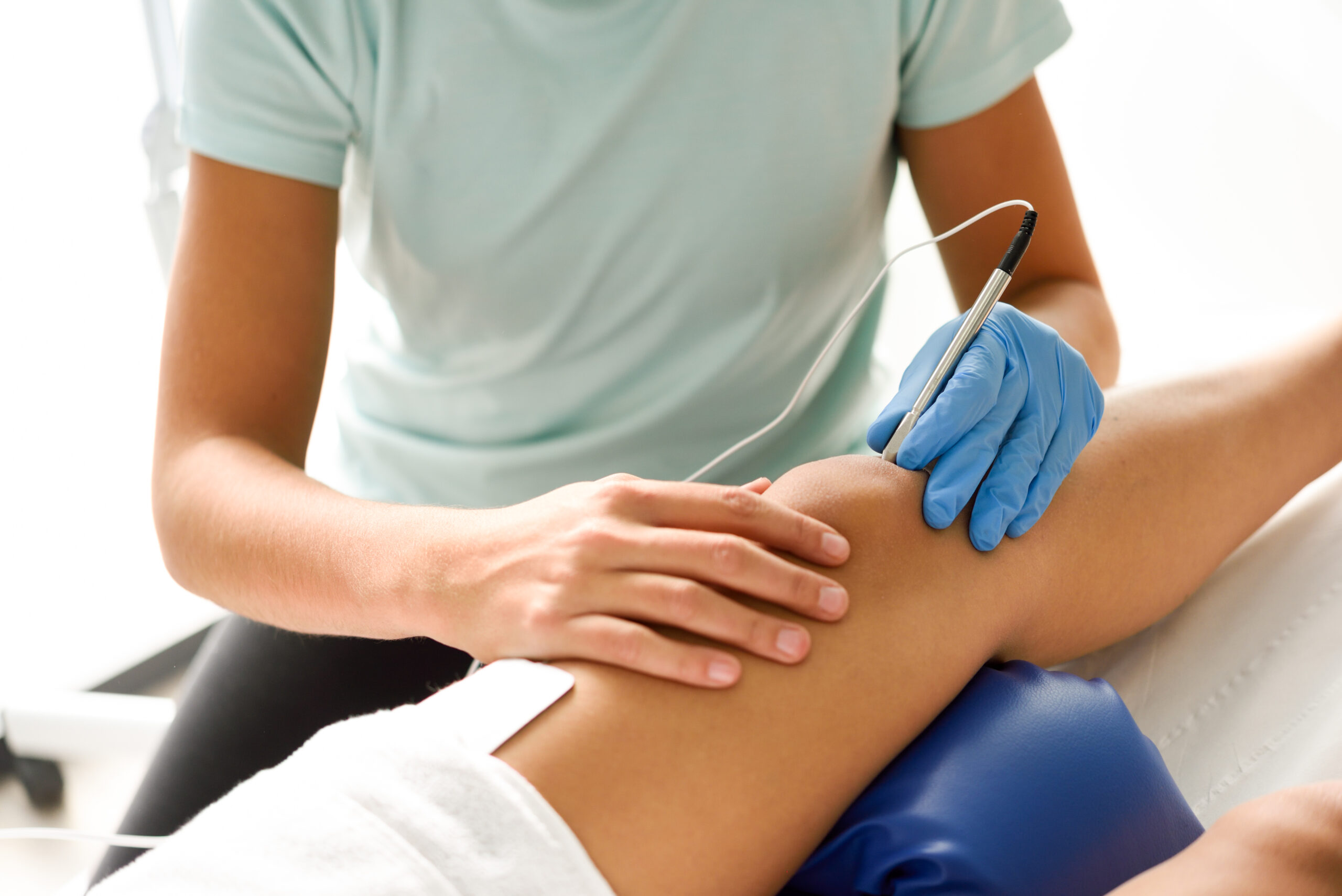What Is Dry-Needling?
The term dry-needling has been associated with acupuncture but is used today in other clinical settings including chiropractic care and physical therapy. This procedure is usually performed to relieve pain, body aches and other discomforts in a specific body area where muscle, tendon, ligament, subcutaneous or myofascial tissues may be targeted to release troublesome “trigger points” usually referring to the myofascial layer.
When a body area is injured, there is often leftover trigger points that are generally presumed to be within the myofascial tissue or muscle connective tissue layers. These trigger areas may impede function too. So, dry-needling is used to target and stimulate those trigger point areas in a way that will hopefully “re-boot” that body system or structure back to its normal state.
Some chiropractors use the example of a hard knot that develops within muscle after an injury or trauma as a way to define trigger points. Very fine-grade needles are inserted into the knotted muscle or related tissue and electrotherapy is often used at low doses depending on the area being treated and the healthcare provider’s preferences for treatment.
Those knotted muscle areas are often super sensitive and can trigger both nearby and referred pain while also helping to restore that injured area’s normal function. Think of a muscle that becomes “stuck” in an uncomfortable phase sometimes causing spasms and significant pain along with some decrease in normal function.
 How Trigger Point Areas Become Dysfunctional
How Trigger Point Areas Become Dysfunctional
Injuries that result in residual trigger points that cause discomfort may also be considered dysfunctional. There are several ways that this dysfunction level can be assessed and measured.
Trigger points show dysfunction including:
- Changes in chemical mediators resulting in area inflammation
- Local pH levels often increase
- Spontaneous electrical activity increases
- Muscles develop tension as a result of above changes
- There may be decreased range of motion and flexibility at trigger point site and nearby
Some Similarities & Differences Between Dry-Needling & Acupuncture
Although at first glance acupuncture and dry-needling appear to be one and the same, there are some key differences. Acupuncture typically uses small needles that are placed in the key discomfort areas.
This is done to stimulate the body’s natural release of “feel good” hormones called endorphins. These endorphins help to alleviate pain by anti-inflammation characteristics of the endorphins. Most pain is related to inflammation, so triggering the release of those anti-inflammatory endorphins tends to reduce pain.
Dry-needling has been shown to decrease the targeted tissue’s sensitivity thereby decreasing overall pain and discomfort in that region.
On the other hand, dry-needling also uses fine needles that are inserted under the skin, but these needles are generally placed around the main pain source at the trigger point areas. The pain reduction response is usually attributed to similar stimulation of endorphins and other anti-inflammatory body responses, but many chiropractors feel the wider treatment area provides more beneficial results overall.
There are five key benefits of dry-needling.
1. Dry-Needling Eases “Stuck” Trigger Points Reducing Discomfort
When an area of the body sustains a muscle or other soft tissue injury, the result can be area inflammation that causes pain and discomfort. The force of the injury impact in traumatic types of injuries also leaves the impacted area sore, tender, bruised and hurting.
When the pain persists despite acute pain reduction measures, there may be trigger points that become gnarled and knotted leaving the muscle tissue and nearby connective tissues stuck in a painful contraction-like position. This can be especially sensitive to touch or stimulation. It is like the muscle remembers the pain in those residual trigger point areas.
Dry-needling may help to release these knots by stimulating the trigger points causing the muscles to twitch at first. Afterwards, the muscle generally does become more relaxed overall. Similar to acupuncture, the small needles that are inserted promote intramuscular stimulation that then causes the targeted muscles to relax.
Specific Kinds of Pain Dry-Needling May Help
Chiropractors often treat car accident victims and treat many sports-related injuries as well. Rather than just treating the presenting pain only, these health specialists are trained to look for hidden underlying causes in hopes of restoring full function of the injured region.
There are some specific kinds of pain that dry-needling may help, which include:
- Phantom pain – amputees often develop this pain
- Night cramps
- Disc and/or joint discomforts
- Mouth and jaw problems like TMJ
- Tendonitis
- Pain or stiffness from repetitive motions – carpal tunnel
- Tension headaches including migraines
- Residual pain caused by shingles – post-herpetic neuralgia
- Pelvic pain
- Back, shoulder or neck pain
- Spinal related problems
Special Cautions Regarding Dry-Needling
There are other health conditions that may result in similar symptoms that may be effectively treated with dry-needling. This treatment is relatively safe for most with a few exceptions. Pregnant women, young children, those with an exaggerated fear of needles and individuals taking anti-coagulants should not undergo this therapy. Other forms of therapy and chiropractic treatments may be best in these situations.
2. May Improve Blood Circulation & Promotes Faster Healing
When an injury occurs that negatively impacts the muscle, or the area around it, the muscle fibers may become thickened into scar tissue or just a hardened knotty area that is often called a trigger point.
Sometimes, those hardened problematic areas restrict blood flow. Since oxygen is carried to points throughout the body via the blood, this means that the impacted area gets less oxygenated blood which can decrease and impede the body’s natural healing mechanisms. This lack of oxygen can create more pain.
Dry-needling targets those problem areas seeking to stimulate them. This is usually followed by a deeper relaxation of the muscle tissues afterward. As these hardened or scarred areas become less constrictive, more oxygen will be able to circulate through the blood supply initiating natural healing responses.
The process of dry-needling helps by first creating smaller injuries, by the needles, in hopes that the body triggers its inflammation process known to stimulate collagen and protein formation necessary for healthy muscle tissue growth and healing. Over time, this healing process will help to restore previous muscle function.
 3. Dry-Needling May Improve Flexibility & Range of Motion
3. Dry-Needling May Improve Flexibility & Range of Motion
During normal conditions, healthy muscle tissue responds to signals that cause them to contract and extend allowing humans the ability to move. When something impedes this process, the muscle bands can become stretched too far or become stuck in an unnatural position causing discomfort.
When injuries occur, the nearby structures may become stiff and difficult to move especially if the injury occurs near a joint like at the shoulder, knees or hips. Range of motion can be limited due to the inability of the muscle tissue to respond accordingly. Muscles that are left unused for too long can develop thick scar tissue and muscle atrophy.
Muscle spasms often occur when an injured area develops barriers like taut bands that cause increased muscle tension and resultant pain and difficulty with normal motions. Dry-needling stimulates those over-sensitized muscle bands to twitch and then release.
Dry-needling may release tension, decrease inflammation and pressure within those trigger points indirectly reducing discomfort and improving flexibility and help to restore range of motion back to a pre-injury condition in some cases.
This mode of therapy is often performed in tandem with other helpful therapies and treatments including physical therapy, various exercises, strength-building routines, acupuncture, deep tissue therapeutic massage and more.
4. Dry-Needling May Help a Variety of Injuries & Health Conditions
Dry-needling may help treat a wide variety of sports and other accidental injuries usually involving the musculoskeletal systems.
Some of these musculoskeletal conditions that may respond favorably to dry-needling therapy include:
- Whiplash
- Muscle aches and pains – including overuse of muscle discomfort
- Fibromyalgia pain
- Tendonitis
- Back pain
- Headaches like migraines
- Many types of sports injuries – sprains, strains and more
- Shoulder or neck pain or stiffness
- Heel pain
- Hip discomforts or stiffness
5. Dry-Needling Provides an Opportunity for Impacted Trigger Areas to Reboot & Resume Normal Bodily Functions
When pain and discomfort occur after an injury and persist, there may be trigger points that are hindering healing and recovery. Studies have shown that the muscles around the trigger point areas often measure a higher tension than muscles when in a relaxed state. This is due to the overstretched muscle bands being cut short and not being able to complete the normal extend and release movement.
After dry-needling stimulates the trigger point area muscles to twitch, the muscle tension is often significantly reduced after the treatment. The underlying causes of this dysfunction may be helped to correct themselves by use of this treatment measure according to many chiropractors and other healthcare providers that deal with these types of injuries.
This treatment gives those injured areas a window of opportunity to reset themselves with the goal being increased flexibility and range of motion and decreased stiffness and other pain and discomforts. These processes help to change the dysfunction at the cellular and electrical levels, stimulating the neurological system to respond in a positive manner releasing built-up tension, pressure and decreasing inflammation and pain.
 What to Expect During & After a Dry-Needling Session
What to Expect During & After a Dry-Needling Session
People may experience a variety of sensations during and after undergoing a dry-needling treatment session. Most individuals may notice a slight pinch or quick sting when the needles are inserted, and others will hardly feel anything at all. This all depends on the area being worked on, how extensive the trigger points are and the differences in provider techniques.
Shorter sessions may indicate that the needle is in place for only a few seconds and a longer treatment session may last 15 minutes or so. It is common for patients to feel a twinge when the triggered points are directly hit but this doesn’t last long. After, the patient generally feels some achiness and cramping.
Some individuals complain of some lingering muscle area soreness for a few hours or up to 48 hours. All of this will be explained during your consultation appointment.
Many individuals experience positive benefits after undergoing dry-needling. This treatment procedure is becoming more widely used in recent years. Typically, most patients will feel a decrease of discomfort and may see improved function and better range of motion following these treatments.
Learn more and schedule a consultation appointment or contact Denver Chiropractic LLC, by phoning (303) 455-2225.

